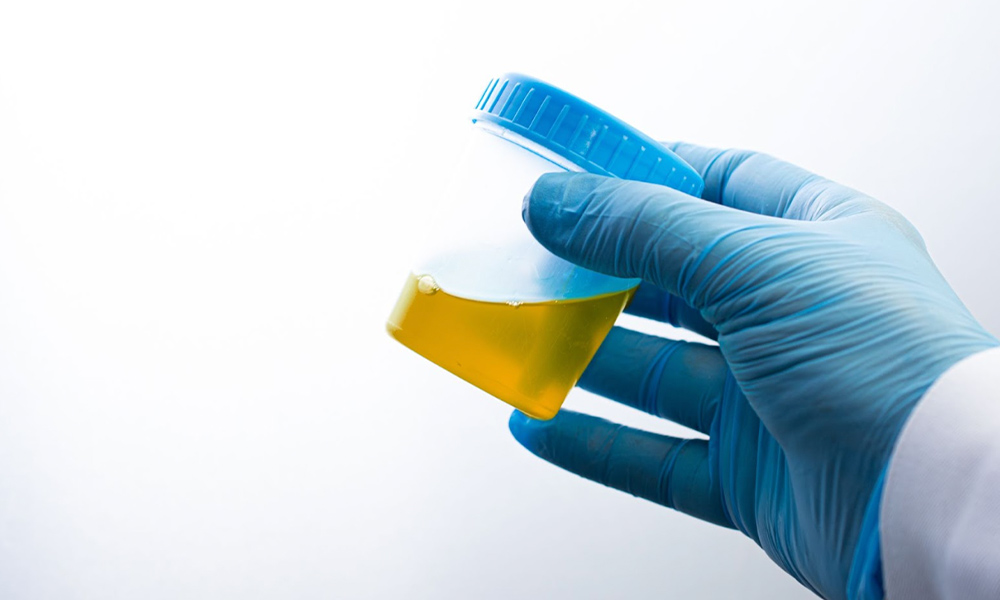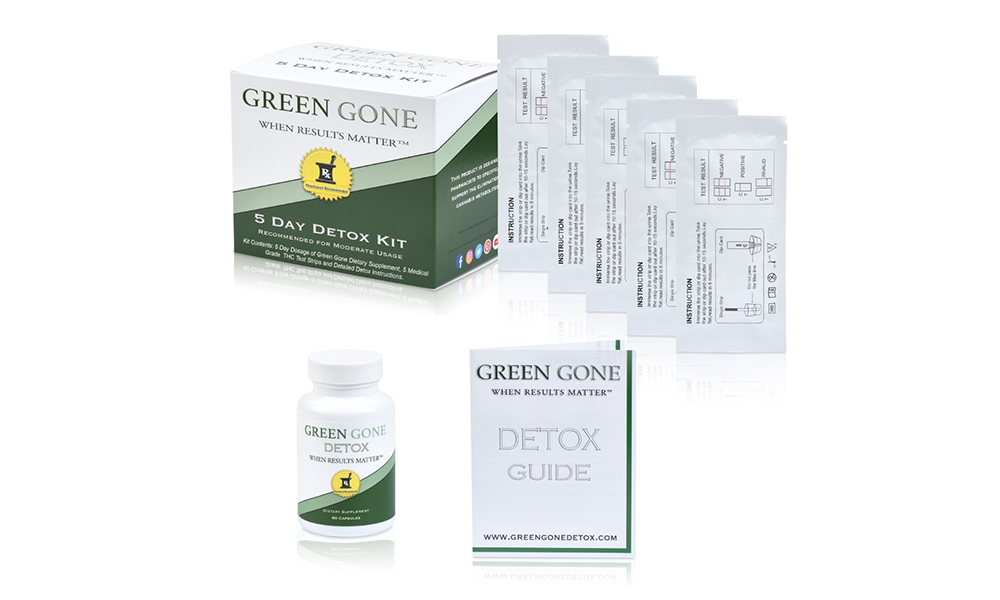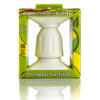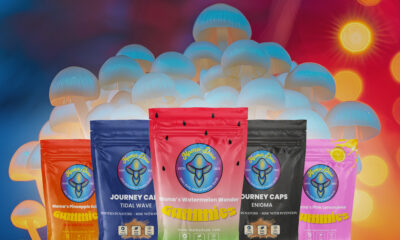
Sponsored
THC Detox: What You Need to Know
Considering a THC detox for employment tests? Learn from Green Gone Detox how a THC detox can help.
A THC detox is extremely complex from an objective standpoint. Absorption and metabolism of THC molecules into water-soluble metabolites so they can be urinated out is a naturally time-consuming process. Green Gone Detox, a THC detox brand designed by pharmacists, is on a mission to help you safely, naturally cleanse marijuana from your system. The goal of this article is to objectively explain THC drug testing and provide honest answers to the following questions:
- Why would I need to detox from THC?
- How long will THC stay in my system?
- What options do I have to expedite the process?
There are a variety of situations in which one may need a cannabis detox. A common situation is a urine drug test for pre-employment. Health insurance or life insurance may also require a drug test prior to policy approval. Drug screening is a routine part of parole proceedings. Some physicians and pain clinics require drug tests. Some athletic organizations may require the participant to pass a urine drug test as well.
Apart from the seemingly mandatory situations, one may personally wish to start a THC detox to reset their tolerance, AKA a “tolerance break” or “T-break”. Additionally, people may wish to refrain from cannabis simply to see how long it takes their body naturally, over time, to test clean for future reference. Regardless of your reason for detoxing, all situations should be treated with the same objective: focusing on how THC is metabolized and excreted by the human body. This leads to the importance of timing.
How Long is a THC Detox?
The amount of time THC stays in your system can vary depending on the attributes of the user in question. Some key factors include age, body composition and genetics. As we age, our metabolisms tend to slow down naturally and process chemicals that we ingest at a slower pace. Because of the complexity of how THC is broken down, many users will continue failing a drug test for cannabis even after many weeks of abstinence. The blend of liver enzymes your body tends to make also matters. The initial THC → THCOOH carboxylation reaction is mediated by a key liver enzyme system known as CYP 2C9. This is important because once the THC is carboxylated to THCOOH, the metabolite can participate in several other metabolism pathways that increase the water solubility.
Let’s not overcomplicate it though. The goal of all this is simply to break the molecule down into something easier to get rid of. If your body can’t break it into smaller molecules, the liver will add functional groups to improve water solubility to try and pass it with urine that way. That’s what’s happening here. Problems show up if you’re one of the unlucky people that doesn’t make enough—or at times not at all—the enzyme 2C9 to mediate the above-described reaction. Thankfully, only a couple percent of the population have this genetic anomaly though.
Then, there’s the whole matter of how much THC exposure the user has had. How much and for how long did the exposure take place? What was the method of ingestion? What was the potency of the material in question? All these factors matter when determining the time required for a clean test.
Having said all that, on average, it takes most consistent cannabis users around a month to test comfortably under the cutoff screening without any intervention other than time and abstinence. This, however, can fluctuate greatly depending on a combination of the above factors.

How a Drug Test Works
Now, let’s review how the drug test itself works. When a urine THC drug test is administered, they’re not actually testing for THC molecules themselves, but rather water-soluble THC metabolites that stay in your system much longer (such as the THCOOH described above).
The standard cut off that most testing centers are looking for is less than 50 ng/mL. This cutoff is extremely sensitive, as the test can detect a very small amount of additive THC metabolites per volume. However, it’s important to note here that if this is passed on a THC urine dipstick, then the test is over, assuming the upfront tests determine there’s nothing “wrong” with the sample.
What could be wrong? Several things if a substitution is made, which is an illegal form of fraud—something Green Gone Detox is strongly against. For example, the temperature could be too high or too low; an additive could be found in the sample; or the density of the urine could show the sample is diluted.
Green Gone Detox advises consumers to provide a real sample that is really from you and nobody else in an untampered state. Usually, this sample needs to have less than 50 ng/mL THC metabolites. If this test is failed for substance, many labs will do a confirmatory test via GCMS (gas chromatography mass spectrometry) that examines the specific molecules flagged even more closely to rule out a false positive.

Green Gone Can Help
Now that you have background info on some of the factors that influence THC metabolism and excretion, and how the drug test itself is conducted, let’s discuss timing.
Naturally, you’ll want to speed the detox process up if you’re going to take a drug test. Green Gone Detox works in five distinct ways to decrease the overall time to a negative THC test:
- Increase in metabolite output in the liver. The goal here is to encourage the liver to put these metabolites out as fast as possible, so they can be urinated and defecated out. Green Gone Detox uses a potent liver enzyme inducer known as St. John’s Wort.
- Binding of metabolites in the gut. To accomplish this, Green Gone Detox uses soluble fiber in the form of Psyllium Huskto tie up metabolites in the lower gut to be passed with stool.
- Decrease albumin binding. This one was the big breakthrough for Green Gone Detox. Recall that a major issue with attempting to dissolve metabolites into the urine itself is that THC metabolites are highly bound to blood proteins. Green Gone introduced salicylate derivatives naturally found in White Willow. This binds to the same sites on albumin as THC metabolites, and in doing, so frees up the drug to be cleared with the urine much easier. Additionally, this is why NSAIDs or non-steroidal anti-inflammatory drugs can cause false positives on a THC test strip, because both molecules are chemically similar and bind to the strip.
- Increase urine pH. Most urine produced is acidic in nature. Given the metabolites are also acidic, they tend to dissolve poorly. The Green Gone Detox formula increases pH using Sodium Bicarbonate to fix this.
- Increase urine output. This is fairly straightforward. Now that the hard part has been accomplished (making the metabolites quicker, collecting them in the gut, preventing them from being bound in the bloodstream, and increasing the pH to encourage them to dissolve in the urine), all you’ll want to do is produce more urine. Green Gone Detox also satisfied this need via a natural diuretic known as Horsetail Extract.
Green Gone Detox kits are proudly designed by pharmacists and made in the US at an FDA-inspected, GMP-certified facility. Additionally, health-minded consumers can rest easy knowing the Green Gone Detox kits are vegan and Kosher-friendly. Each kit is stocked with five THC urine test strips, and all kits are covered by Green Gone LLC’s 30-day money-back guarantee.
Ready to Detox?
Hopefully this article helps you better understand how a THC cleanse works, as well as some of the methodology behind it. If you would like to learn more or would like to see which product would best fit your personal needs, try Green Gone Detox’s THC detox calculator. The brand has a seven-year established record of helping people successfully reach their THC detox goals.


















